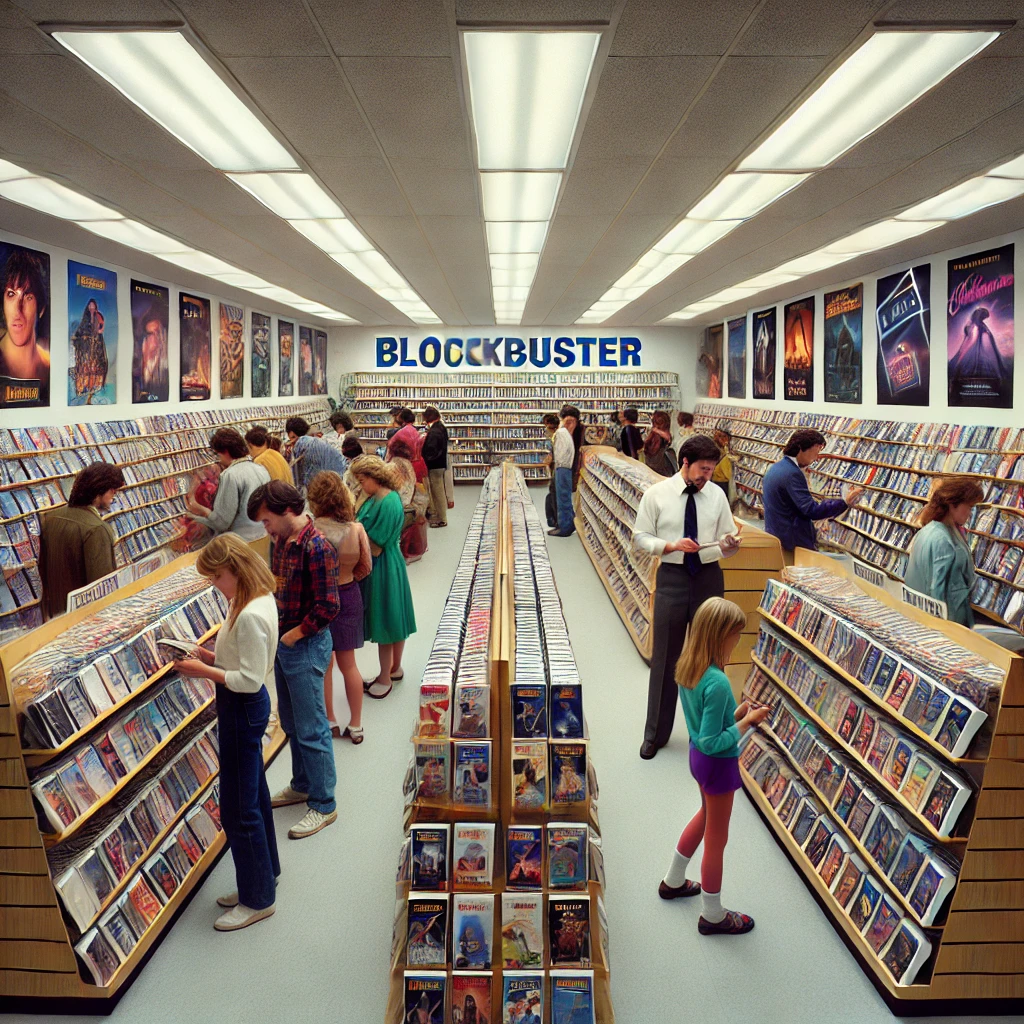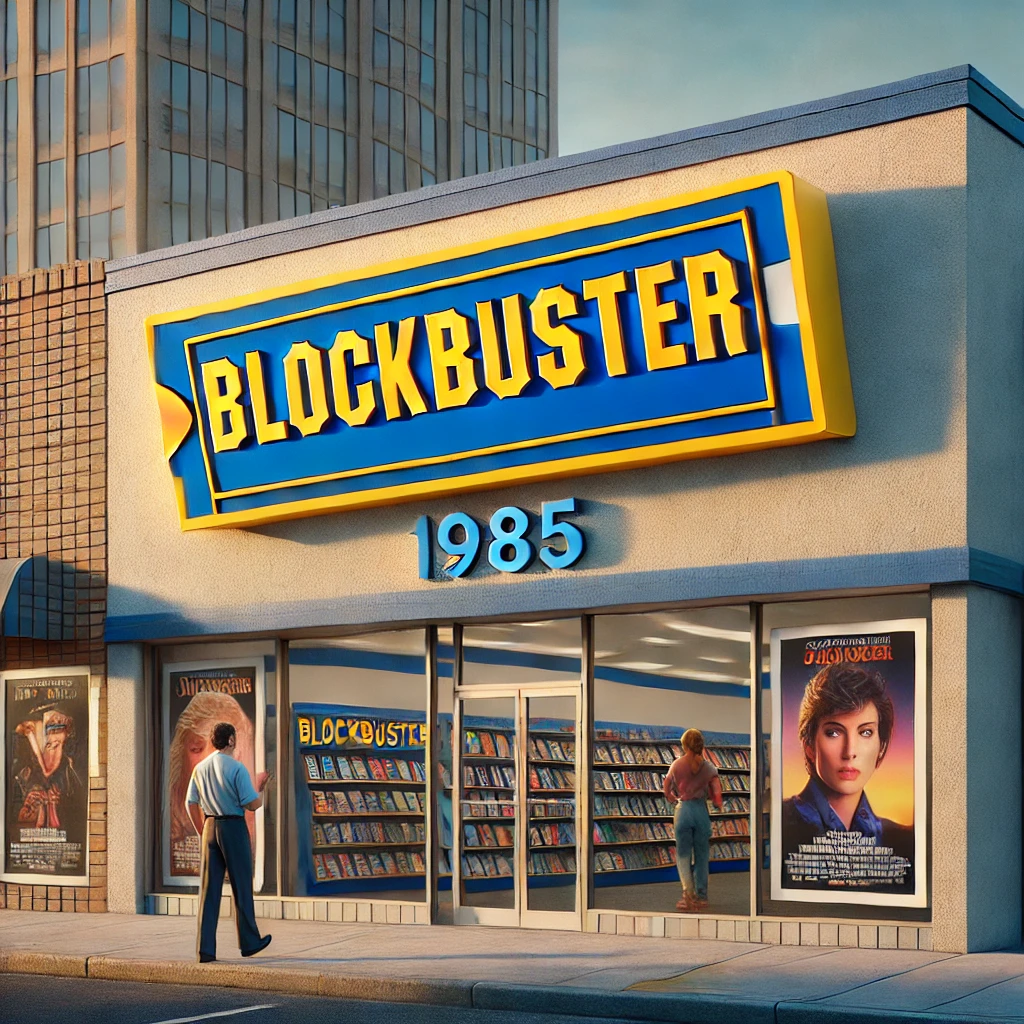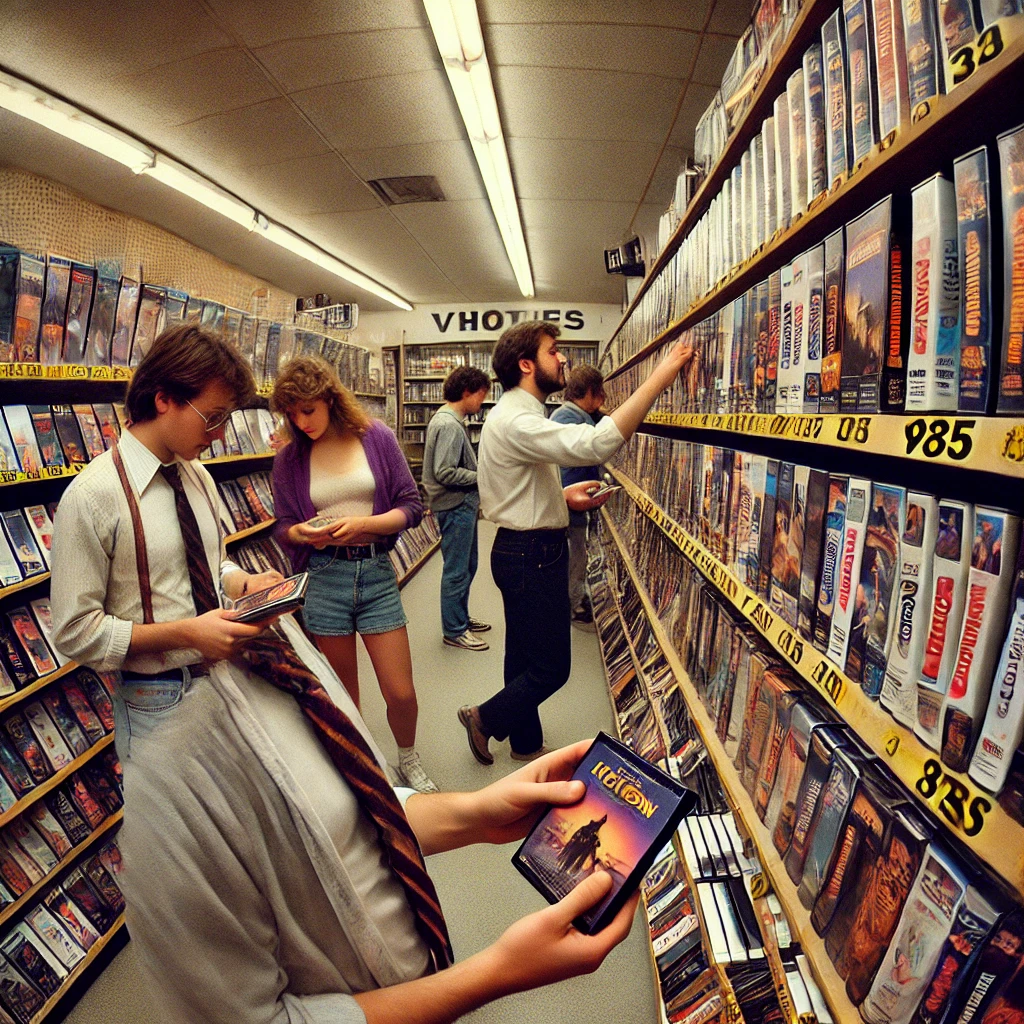On October 19, 1985, the first Blockbuster video rental store opened its doors in Dallas, Texas, revolutionizing the way people consumed movies and entertainment. Founded by David Cook, Blockbuster quickly became synonymous with home video rental and played a pivotal role in shaping the home entertainment industry. Its innovative business model and widespread expansion would redefine how movies were accessed, making it a cultural staple of the late 20th century.

The Vision Behind Blockbuster
David Cook, an entrepreneur with a vision for transforming the video rental experience, opened the first Blockbuster store as a response to the growing demand for home entertainment. At the time, the video rental market was fragmented, with small, independent stores offering limited selections. Cook recognized an opportunity to create a larger chain that would provide a wider variety of titles and a more organized shopping experience for customers.
The Blockbuster concept included a unique inventory system and a standardized layout that made it easy for customers to browse and find movies. The store’s signature blue and yellow branding became instantly recognizable, setting it apart from competitors. The introduction of a membership system allowed customers to rent videos at a flat rate, making it more convenient and affordable for families to enjoy movies at home.

Rapid Expansion and Cultural Impact
Following the success of the first store, Blockbuster experienced rapid growth, expanding into new markets across the United States and eventually internationally. By the late 1980s and early 1990s, Blockbuster became a household name, with thousands of locations offering an extensive selection of VHS tapes, later transitioning to DVDs and video games. The company capitalized on the home entertainment boom, becoming a central player in the industry.
Blockbuster’s influence extended beyond video rentals; it became a cultural phenomenon. Families flocked to the stores on weekends, making movie nights a popular pastime. The excitement of browsing aisles filled with the latest releases and classic films created a unique experience that became part of American pop culture. Blockbuster also introduced the concept of “new releases,” generating excitement around the latest film releases and setting trends in the industry.
The Rise and Fall of Blockbuster
Despite its initial success, Blockbuster faced significant challenges in the late 1990s and early 2000s, particularly with the advent of digital streaming services. As companies like Netflix began to offer subscription-based models that allowed customers to rent movies by mail and eventually stream content online, Blockbuster struggled to adapt to the changing landscape of home entertainment. The company’s attempts to enter the digital market were often viewed as too little, too late.

In 2010, Blockbuster filed for bankruptcy, marking a dramatic decline from its former dominance in the industry. The once-ubiquitous video rental giant, which had over 9,000 stores at its peak, closed many locations and shifted its focus to digital streaming and rentals. However, the rapid rise of online streaming platforms led to the closure of the majority of its remaining physical stores.
The Legacy of Blockbuster
The legacy of Blockbuster extends beyond its rise and fall; it represents a pivotal moment in the evolution of home entertainment. While the company may no longer dominate the market, its impact on the film rental industry is undeniable. Blockbuster’s business model and customer experience set a standard that many modern rental services still aspire to achieve.
Additionally, the cultural significance of Blockbuster remains intact. It evokes nostalgia for a time when families gathered to choose movies from a physical store, and Friday night movie rentals were a cherished tradition. Blockbuster’s legacy continues to inspire documentaries and retrospectives, highlighting its role in shaping the entertainment landscape of the late 20th century.
The opening of the first Blockbuster store on October 19, 1985, marked a transformative moment in the history of home entertainment. David Cook’s vision of a centralized video rental experience revolutionized how people accessed movies and shaped a cultural phenomenon that would endure for decades. While the company faced challenges in the face of digital innovation, its impact on the film rental industry and popular culture is a testament to the changing dynamics of entertainment consumption. As we look back on Blockbuster’s legacy, we celebrate its role in creating memorable movie-watching experiences and its enduring influence on the entertainment landscape.
